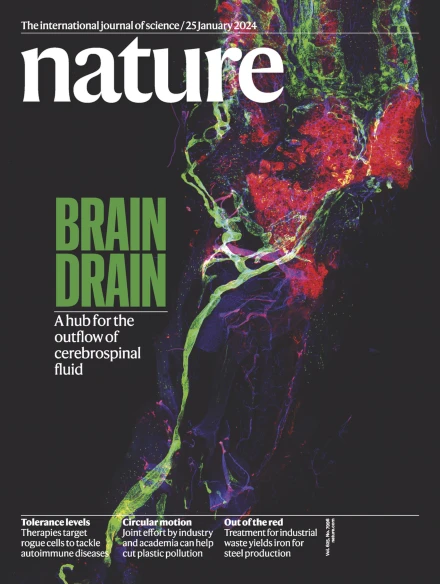In-line NMR guided orthogonal transformation of real-life plastics.
IF 50.5
1区 综合性期刊
Q1 MULTIDISCIPLINARY SCIENCES
引用次数: 0
Abstract
The global crisis of plastic waste accumulation threatens wildlife and ecosystems1. Catalytic processes that convert plastic waste into valuable chemicals and fuels offer promising solutions2. Recycling or upcycling of real-life plastic mixtures is challenging owing to their diverse composition and structure3. Here we propose a product-oriented strategy leveraging the orthogonality in reactivities of different functional groups in plastic mixtures to yield valuable products. This approach involves identifying functional groups followed by converting a selective component in the mixture to valuable products. We use mixtures of polystyrene, polylactic acid, polyurethane, polycarbonate, polyvinyl chloride, polyethylene terephthalate, polyethylene and polypropylene, as well as real-life plastics, to demonstrate the feasibility and effectiveness of the proposed strategy. The diverse physical and chemical properties of these components, which typically hinder direct recovery, offer opportunities for extraction and transformation with the proposed strategy. From a 20-g mixture of real-life plastics, including polystyrene foam, a polylactic acid straw, a polyurethane tube, a polycarbonate mask, a polyvinyl chloride bag, a polyethylene terephthalate bottle, a polyethylene dropper and a polypropylene bottle, we obtained more than 8 separate chemicals: 1.3 g of benzoic acid, 0.5 g of plasticizer, 0.7 g of alanine, 0.7 g of lactic acid, 1.4 g of aromatic amine salt, 2.1 g of bisphenol A, 2.0 g of terephthalic acid and 3.5 g of C3-C6 alkanes. This study reveals the potential for designing transformation strategies for complex plastic waste based on their chemical nature and opens paths for managing end-of-life plastic mixtures.在线核磁共振引导正交变换的现实生活中的塑料。
塑料垃圾堆积的全球危机威胁着野生动物和生态系统。将塑料废物转化为有价值的化学品和燃料的催化过程提供了很有前途的解决方案。由于现实生活中的塑料混合物的成分和结构不同,回收或升级利用是具有挑战性的。在这里,我们提出了一种以产品为导向的策略,利用塑料混合物中不同官能团的反应性的正交性来产生有价值的产品。这种方法包括识别官能团,然后将混合物中的选择性成分转化为有价值的产品。我们使用聚苯乙烯、聚乳酸、聚氨酯、聚碳酸酯、聚氯乙烯、聚对苯二甲酸乙二醇酯、聚乙烯和聚丙烯的混合物,以及现实生活中的塑料,来证明所提出策略的可行性和有效性。这些成分的不同物理和化学性质通常会阻碍直接回收,但通过提出的策略,为提取和转化提供了机会。从20克的混合现实生活中的塑料,包括泡沫聚苯乙烯、聚乳酸稻草,聚氨酯管,聚碳酸酯面具,聚氯乙烯的包,一瓶聚对苯二甲酸乙二醇酯、聚乙烯滴管和聚丙烯瓶,我们获得了超过8个独立的化学品:苯甲酸的1.3克,0.5 g的塑化剂,丙氨酸0.7克,0.7 g的乳酸,芳香胺盐1.4克,2.1 g的双酚a,对苯二甲酸的2.0 g和3.5 g C3-C6烷烃。这项研究揭示了基于化学性质设计复杂塑料废物转化策略的潜力,并为管理报废塑料混合物开辟了道路。
本文章由计算机程序翻译,如有差异,请以英文原文为准。
求助全文
约1分钟内获得全文
求助全文
来源期刊

Nature
综合性期刊-综合性期刊
CiteScore
90.00
自引率
1.20%
发文量
3652
审稿时长
3 months
期刊介绍:
Nature is a prestigious international journal that publishes peer-reviewed research in various scientific and technological fields. The selection of articles is based on criteria such as originality, importance, interdisciplinary relevance, timeliness, accessibility, elegance, and surprising conclusions. In addition to showcasing significant scientific advances, Nature delivers rapid, authoritative, insightful news, and interpretation of current and upcoming trends impacting science, scientists, and the broader public. The journal serves a dual purpose: firstly, to promptly share noteworthy scientific advances and foster discussions among scientists, and secondly, to ensure the swift dissemination of scientific results globally, emphasizing their significance for knowledge, culture, and daily life.
 求助内容:
求助内容: 应助结果提醒方式:
应助结果提醒方式:


